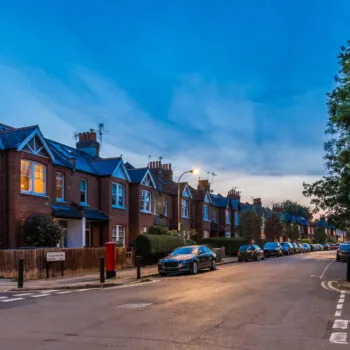Energy efficiency rarely achieves the political priority it deserves. This could cost us all dearly. What politicians need to understand is that they cannot decarbonise our economy without being serious about energy savings. A new report out today shows how.
Frontier Economics was commissioned by the Energy Efficiency Infrastructure Group, of which E3G is a part, to develop an Action Plan for a Buildings Energy Infrastructure Programme. A few of the core policy elements include:
- A target for all homes to be brought up to an energy performance rating of C (on the A to G scale) by 2035, with all low-income households achieving a C rating by 2030;
- A requirement for new homes to be constructed to a zero-carbon standard by 2020;
- Full subsidies for all low-income home-owners to undertake energy renovations;
- A demonstrator programme to test the most attractive schemes to unlock able-to-pay households’ investment in energy renovation, including zero interest loans, low interest equity release and salary sacrifice schemes;
- Changes to Stamp Duty to encourage renovations when people move home;
- Tax allowances for private landlords and 50% subsidies for social landlords to improve their properties’ energy performance.
Why is this important?
The gap between efforts to reduce our greenhouse gas emissions and what is required to address the UK’s legally binding limits on them is most glaring in our homes and offices, which are responsible for one third of the UK's emissions tally. As Lord Deben, Chairman of the Committee on Climate Change, says
“it is in transforming the built environment that the battle against climate change should now be raging”.
Sadly, it isn’t. Homes continue to be built to poor energy performance standards and the UK’s existing housing stock languishes as one of the least energy efficient in Europe.
To avoid being trapped in buildings for decades that aren’t clean and cheap to run, everything we construct and everything we renovate is going to have to reach the highest energy performance and be done to the highest quality standards. This means becoming world-leading in terms of improving running costs, comfort, indoor air quality, safety and resilience to extreme weather events along the way.
Achieving energy efficiency
These benefits are attainable. Clear, coordinated and long-term ambition, sensible regulation (not red tape), subsidies for those who cannot afford to undertake renovations, and inducements for those who can, are necessary to create an environment in which a free and innovative market for energy efficient and low carbon renovation of our homes will thrive. This is the challenge to policy makers.
This report addresses that challenge head-on. It sets out a comprehensive infrastructure investment programme to transform the energy performance of the housing stock, including a clear action plan for its delivery.
The report’s proposals are centred around two imperatives. First, to urgently improve the energy performance of homes owned or rented by low income as well as fuel poor households, guided by the target to improve all 4.7 million to an energy performance rating of C (on an A to G scale) by 2030. The public subsidy-driven approach proposed is critical to ensuring that climate policy is socially acceptable and the transition to a low carbon economy is fair.
Second, to maximise the private investment contribution from those who are better off in meeting a target to get all 14.6 million remaining homes to a C rating by 2035. Here, the report’s proposals centre around a combination of driving demand (through sensible but mandatory minimum standards at point of rental and sale, and Stamp Duty which varies with properties’ energy performance as well as purchase price) and making it easy (through low cost loans, salary sacrifice and small inducements).
Taken together, delivery of the programme would require £1.7 billion of public sector investment per year (up from £0.6 billion today), which is designed to leverage an annual £3.9 billion of private investment. This investment is more than affordable. The UK’s market for housing repair and maintenance was worth £25 billion in 2016. The Treasury intends to spend £170 billion on housing and economic infrastructure, as well as R&D programmes, over the next five years. Diverting a small share of these capital funds to retrofitting homes would fully fund the programme and would provide economic returns comparable to any other national infrastructure project. Crucially, its societal and economic benefits would be far more immediate and more widely enjoyed than those from road or rail projects.


